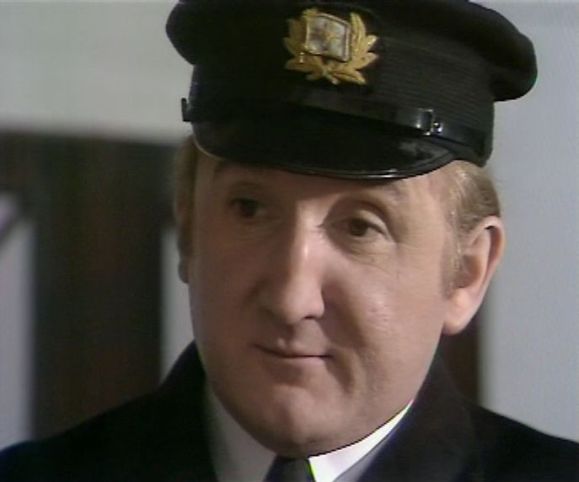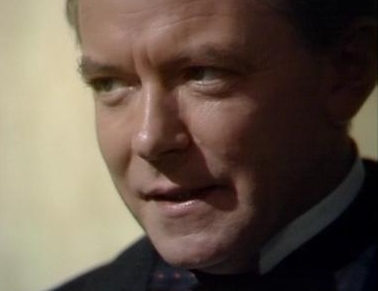Robin Ellis as Charles Dallas in The Missing QCs by John Oxenham
Adapted by John Hawkesworth. Directed by Jonathan Alwyn
When two leading barristers who are conducting an important murder case (one for the prosecution, the other for the defence), vanish without trace, it falls to junior barrister Charles Dallas (Robin Ellis) to investigate. The trail leads him to a lunatic asylum run by Professor Dyne (John Phillips) where events take a very unexpected turn ….
The Missing K.C.s was written by William Arthur Dunkerley, using the pen-name of John Oxenham. Dunkerley was a prolific writer – crafting novels as well as poetry and hymns. The character of Charles Dallas only appeared in this one story, published in the late nineteenth century.
Skilfully adapted by John Hawkesworth (Upstairs Downstairs), The Missing Q.C.s is a story that lurches in a very unexpected direction. To begin with, it plays out like a traditional courtroom drama – with plenty of enjoyment to be derived from the performances of John Barron and Jack May as the battling barristers. Both Barron and May were highly experienced actors, blessed with excellent comic timing, which means that their barbed insults are a joy to watch. Charles Lloyd Pack, as the judge, also gives a fine turn as the man in the middle, attempting to keep order.
It’s expected that the story will revolve around George Wilson (Howard Goorney), on trial for the murder of his wife, and whether he’s innocent or guilty. But the whole courtroom section is merely an excuse to introduce us to the Q.C.s and set us up for the second part of the tale.
During the courtroom portion of the story, Charles doesn’t seem that concerned about the case (where he’s acting as Sir Revel’s junior) as he spends his time trying to find the right moment to ask Sir Revel for his daughter’s hand in marriage. Milly Revell (Ceila Bannerman) is a highly spirited young lady and the way she manipulates Charles is an early example of how he tends to be buffeted by events, rather than directing them.
The mysterious disappearance of Sir Revel Revell (John Barron), James Ladbroke (Jack May) and then later on Milly, forces him to take action. Ellis, a few years away from his career-defining appearance in Poldark, is forced by the script to be a rather conventional leading man. This means that the likes of Barron, May and Phillips can effortlessly steal the scenes whilst Ellis has the slightly thankless task of being the rational centre-point of the story.
What makes The Missing Q.C.s so interesting is the sudden gear-change from a conventional mystery to a Hammer-style gothic yarn. Professor Dyne turns out to hold the key to the mystery – and his revelations are gloriously pulpy. Dyne’s lunatic asylum – complete with a mute butler, moaning inmates and vicious dogs roaming the grounds, is certainly a far cry from the sedate courtroom setting of the first half.
As Charles breaks free into the grounds, desperately attempting to avoid the pack of dogs, Milly is still in the clutches of the evil Professor – bound and gagged just as a traditional pulp heroine should be. Also held captive are Revell and Ladbroke, and both of them will shortly be operated on by Dyne. Charles manages to escape and he makes his way to the local police-station, but in a glorious comic sequence he has to struggle to make himself believed. Once the officers learn he’s come from the lunatic asylum they naturally assume he’s an escapee!
With some decent supporting performances (such as Gordon Gostelow as Inspector Mayhew) this brings the second and final series of The Rivals of Sherlock Holmes to a strong conclusion. There were still plenty of other stories that could have been adapted in future series, so it’s a little bit of a shame that it never came back – but the twenty-six episodes that were made do offer a fascinating snapshot of some of the best crime fiction of the late Victorian/early Edwardian age.
























